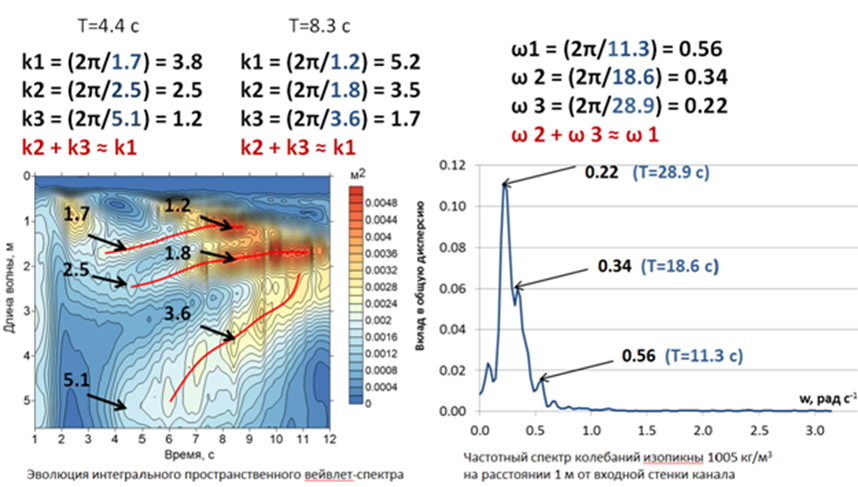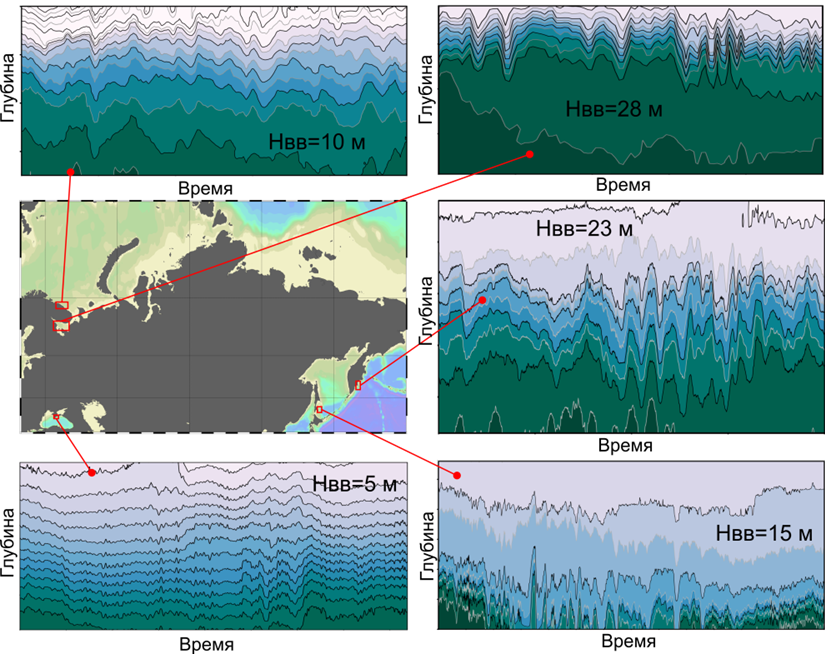Laboratory of geophysical boundary layers

Geography Sciences, A.V. Zimin
zimin2@mail.ru
The laboratory was established in 1968, received its current name in 2013. The laboratory consists of 2 DSc and 5 PhD researchers and 2 graduate students.
MAIN RESEARCH FOCUS
- Methods for Probabilistic Forecasting of Extreme Waves.
- Parametrizing Ocean-Atmosphere Interaction for Weather and Climate Prediction Models
- Evolution of Secondary Internal Waves Generated by Tidal Currents over Underwater Objects.
- Studies of Submesoscale Processes and Phenomena.
IMPORTANT SCIENTIFIC ACHIEVEMENTS


- We propose a new approach to the joint modeling of the ocean, atmosphere, and sea waves, with detailed modeling of processes on the ocean surface. According to this approach, the wind gives off energy and momentum to waves, turbulence, and surface currents through the surface pressure field and tangential stress. The waves retain momentum and energy and later transfer it to currents and turbulence of the upper ocean layer. The proposed approach was successfully tested in the combined regional circulation model of the atmosphere/ocean and sea waves.
- A one-dimensional model of the boundary layer above the waves is formulated for combining atmospheric and oceanic models with surface wave models. It was found that the waves generate a momentum flux, which is not an intrinsic property of the turbulent boundary layer, since it is produced by external influences, i.e., waves. It is this flow that determines the specific properties of the wave boundary layer.
- Experiments with internal wave propagation in a channel helped describe the evolution of the process and obtain quantitative characteristics of the transition time from the co-directional wave motion to the satisfaction of the synchronism conditions and nonlinear 3-wave interaction conditions. Using wavelet analysis, a picture of energy transfer from the forcing wave and long wave to the resulting internal wave was obtained (Fig. 1).
- Based on a combination of satellite data and polygon oceanographic observations, a method has been developed for studying submesoscale processes, which allows its constant monitoring in the tidal seas. The features of the spatial and temporal submesoscale eddy activity over the background of large-scale processes in the Arctic were revealed.
- Based on the data of long-term field observations, the frequency of intense internal waves in the White, Barents, and Okhotsk Seas and the Pacific shelf of the Kamchatka Peninsula were estimated (Fig. 2).
THE INTERNATIONAL COOPERATION
Swinburne University, Melbourne, Australia
Laboratory staff:
- Atadzhanova Oksana Alisherovna
- Bashmakova Natalia Vasilievna
- Belevich Mikhail Yurievich
- Golmstok Alexander Yakovlevich
- Gordeeva Svetlana Mikhailovna
- Zhegulin Gleb Viktorovich
- Zimin Alexey Vadimovich
- Konik Alexander Alexandrovich
- Svergun Egor Igorevich
